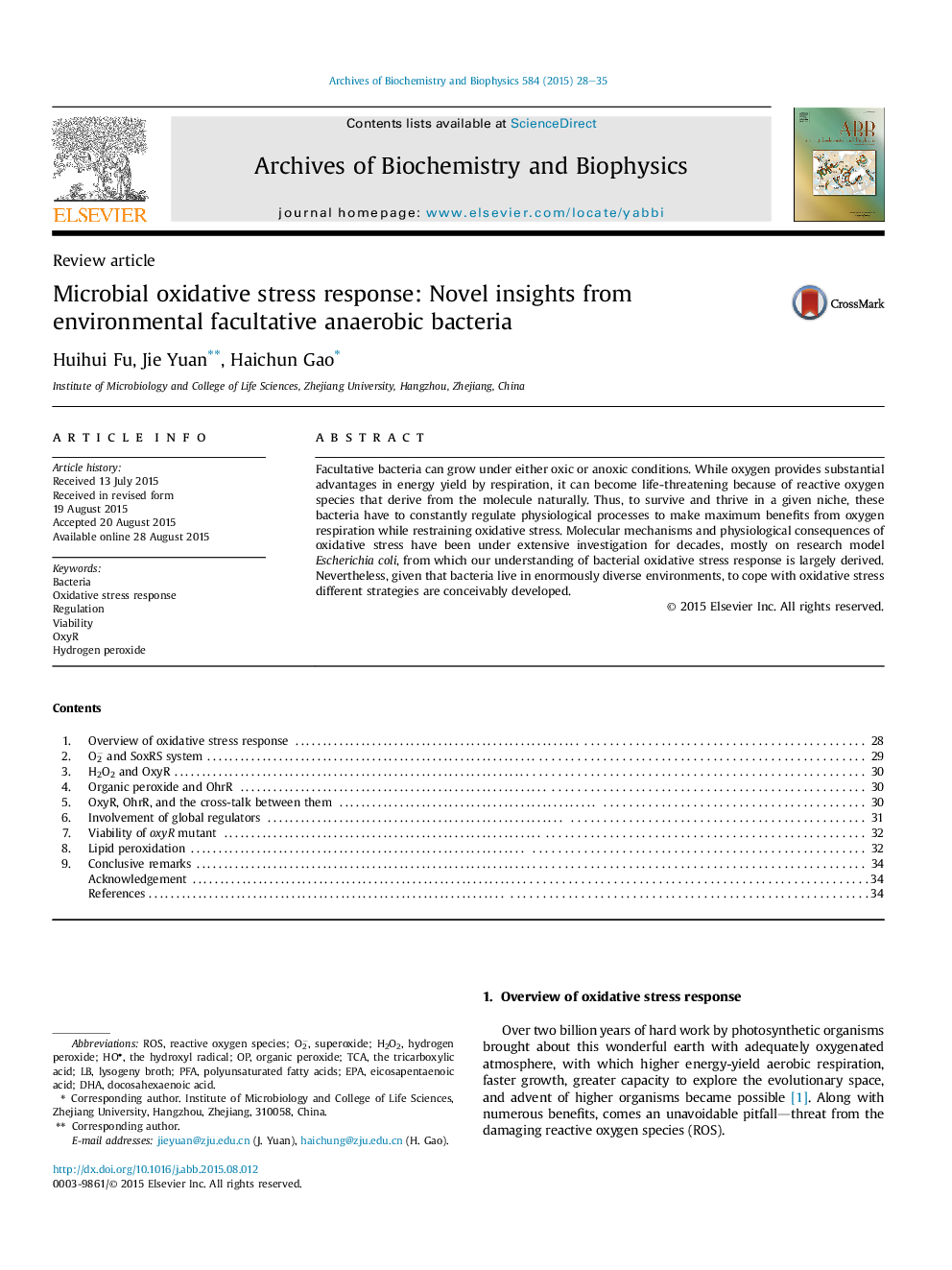| Article ID | Journal | Published Year | Pages | File Type |
|---|---|---|---|---|
| 1924862 | Archives of Biochemistry and Biophysics | 2015 | 8 Pages |
•Current understanding of oxidative stress is largely based on studies on enterobacteria such as E. coli.•Environmental bacteria such as Shewanella evolve novel mechanisms for combating oxidative stress.•There is a crosstalk between OxyR and OhrR in Shewanella oneidensis.•Viability of cells lacking OxyR is substantially compromised because of H2O2 generated abiotically.•Polyunsaturated compounds confer S. oneidensis enhanced resistance to H2O2.
Facultative bacteria can grow under either oxic or anoxic conditions. While oxygen provides substantial advantages in energy yield by respiration, it can become life-threatening because of reactive oxygen species that derive from the molecule naturally. Thus, to survive and thrive in a given niche, these bacteria have to constantly regulate physiological processes to make maximum benefits from oxygen respiration while restraining oxidative stress. Molecular mechanisms and physiological consequences of oxidative stress have been under extensive investigation for decades, mostly on research model Escherichia coli, from which our understanding of bacterial oxidative stress response is largely derived. Nevertheless, given that bacteria live in enormously diverse environments, to cope with oxidative stress different strategies are conceivably developed.
